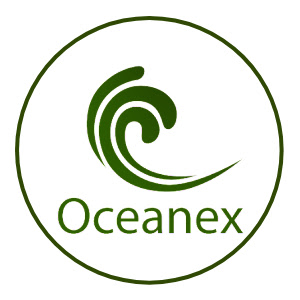Putting sea shell waste to better use
OCEANEX Bio-Renewable Polymer Supplement
Oceanex – Oysters are sustainable… and tasty!
Oysters are widely regarded as a healthy and versatile food and unless you buy them in an expensive restaurant they are a cheap source of energy, protein, minerals and vitamins. It is expected that the global production of oysters will continue to grow in order to fulfil part of the protein demand of the expanding world population.
In the oyster market, the most produced species is Crassostrea gigas, widely known as the Pacific oyster. The Pacific oyster has become the cultivated oyster of choice in many regions of the world due to its speedy growth and its resilience to many diverse environmental conditions. By 2003 the world production of the Pacific Oyster had reached about 4.4 million tons. In 2015 oyster production in Asia alone was estimated at 5.1 million tonnes.

Oyster shell is sustainable too
The shell of an oyster represents more than 70% of its total weight. Every year processing oysters for food leaves behind millions of tons of waste oyster shells. Some of this is sold for use as aggregate or pharmaceutical products, but much of it has historically been landfilled or thrown back into the sea. In recent years interest has grown in putting this waste stream to better use. The creators of OCEANEX are pioneers in utilising this bio-renewable waste material to bring improvements to the production of flexible and rigid non-durable plastics.
A responsible supply chain
In the regions from which the Oceanex raw material is sourced, the coastal areas and lagoons are rich with commercial oyster farms. As a result, working in the oyster trade is a full-time occupation for many residents nearby. Like many local industries, individual households have the opportunity to make a living by providing a small part of the whole process. In this way, everyone has a way to earn money without one large entity controlling their employment.
The ‘shucking’ is normally done by older female family members. However, the industry involves the construction and renewal of the oyster bed infrastructure and preparing and transporting of both the oyster meat and the shell. The requirements of the industry are diverse and it provides work for men and women of all ages.
How Oceanex works
Calcium Carbonate (CaCo3) is already widely used in the production of plastics to stabilise the manufacturing process and to minimise the consumption of expensive petrochemical polymers. The type of CaCo3 used is called Calcite and it is obtained through the mining of limestone.
Waste shell from the mariculture industry is regarded as a nuisance. However, the oyster shell contains not just one, but two types of organic CaCo3. It contains Calcite, but it also contains a CaCo3 variant called Aragonite. Aragonite has a crystalline structure that makes it particularly suitable for inclusion in materials made from synthetic polymers. That’s why OCEANEX can achieve higher polymer reduction levels than by using conventional Calcite alone.
The environmental benefits
The mining of limestone for Calcite involves exploration, overburden removal, drilling, blasting and the hauling of ore to a crushing and processing plant. By comparison, converting waste oyster shell into powder does not require any high‐energy processing and it is relatively simple to do. Most importantly, the CaCo3 and other core ingredients of OCEANEX are bio-renewable and they renew very quickly.
Of course, the key benefit is that when used as a supplement in the high-volume production of plastic products, OCEANEX can potentially result in the saving of tons of petrochemical polymer every year and still deliver products that meet performance requirements.
Doing something today for a better tomorrow at Ecohound
Visit OCEANEX FAQ’S for more information.
